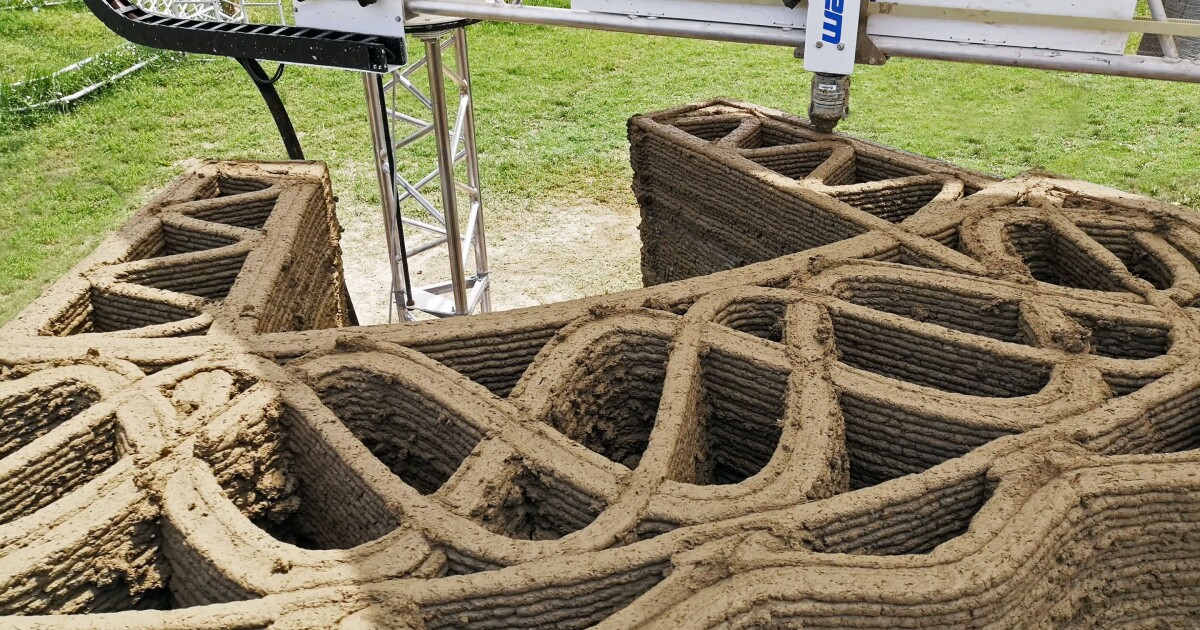If ever there was an industry that could do with some technological overhaul - its housing. 3D Printing threatens to do the job, and seems to have the right tools, but never takes off - will this be the one that does?
At $1,000 per module they offer solutions to homelessness in western countries.
3D Printing threatens to do the job
The modern housing crisis isn’t a consequence of construction labor shortages or even construction labor costs. The primary hindrance to affordable housing is proximate real estate available for development.
Unless you can find a way to print more soil or to automate the pipping and road infrastructure that connects units, these tools will mostly benefit developers in the position to speculate on real estate bought decades in advance of new municipal infrastructure.
At $1,000 per module they offer solutions to homelessness in western countries.
Where do you put the $1000 unit once you’ve built it? On a $300k lot?
I mean, where I live, there’s definitely a construction labour bottleneck.
I’m watching big chunks of my neighborhood go from one-story ranch houses on half-acre lots to three-story units on postage stamp lots. But I’m also watching the cost of this housing skyrocket, because the units are kept independent and free-standing rather than being built as connected blocks with shared insulation, electric, plumbing, and AC.
Consequently, a street that used to sell in the $100k-250k range is putting houses on the market for $600k-$800k. The issue isn’t rate of construction, its the availability of vacant real estate. The solution isn’t to maximize efficiency of land use, its to build luxury properties that can be flipped to rental companies and speculators.
Well, I don’t know where you are, but I actually know of plenty of lots for sale near me. I’m sure that’s not our issue.
The main problem is zoning laws - too much land zoned for single-family residences only, a lack of mixed-use zoning and walkability, and heavily restrictive laws on apartment buildings (height limits, floorplan requirements such as the infamous dual-stairway rule, etc ).
These laws exist because of NIMBY’s - people with an existing stake in the community who don’t want noisy transit, tall buildings being an “eyesore”, affordable housing bringing in more poor people.
The solution, of course, is to [REDACTED] all the NIMBY’s.
!yimby@lemmy.world, my brother/sister in construction freedom.
In the big city closest to me they just abolished single-family zoning. As soon as there’s tradespeople that have a single free second it’s going to be dope. Here, well, it’s a small town.
Yes, single family zoning is shit, and probably why there’s such a built-up shortage here in the first place. And definitely a big contributor to the near-total lack of transit.
Sorry I’m a Tankie I can’t see Lemmy.world
In many cities (thinking of Toledo OH) you can snag free lots.
They are zoned for single family houses only, which would cost $100k-200k to build, with a market value of maybe $50k
And nobody wants to change the zoning to allow 3d printed shanty towns.
In many cities (thinking of Toledo OH) you can snag free lots.
You can also snag a lot of cheap vacant units.
And nobody wants to change the zoning to allow 3d printed shanty towns.
Developers would love to print disposable housing that needs to be abandoned and rebuilt every 20 years or so. The trick is that they want to sell these things for a big markup. They don’t want to flip a $1000 unit at cost.
the people making way too much money in an industry–in this case, banks–will fight tooth and nail to prevent any kind of innovation that offers any alternative to them not making way too much money
The people saying this know nothing about construction or what innovations are needed. Humans have been building housing for thousands of years and we have learned a lot over that time. Anyone asking for a technological overhaul generally doesn’t even know what we have learned and so is just going to make mistakes (sometimes deadly - there are many ways a house can kill) that someone in the industry would avoid. Generally they come up with something that costs more while being worse because they have no idea where the real problems are and so didn’t optimize it.
I mean, there’s lots of ways construction has changed already just in the last 20 years.
That is the other thing - there are already a lot of smart people thinking about it and making changes.
I feel like that contradicts what you said before, but I agree. Most ideas that sound good at first aren’t, but some actually go the distance. That applies retrospectively, and to current startups like this.
(As pictured, in the application named, I do suspect it’s the former)
Edit: Wait, this thing isn’t actually that expensive, by robot standards. Hmm.
The smart people thinking about construction know the real problems and are working on them. The people commenting here mostly don’t know what those issues are.
Where might I learn more about these issues?
Go into the industry? Market research? Lots of options but none easy
From what I’ve ready, the concrete recipe is the hard part.
Yup, it needs to dry fast enough for the next layer, but not so fast it makes a clog, and it needs to flow in just the right way you can predictably extrude a layer on. And be cheap-ish.
Of course, you still have to add a lot of non-structural components, like the other user said, and if it needs to take significant loads you also need to add reinforcement somehow, since concrete is weak under tension.
You also need to add insulation and then do something to hide the ugly layer lines.
$1000 to print the frame, $400,000 by the time the house is ready for some reason.
$450k house is in Austin Tx. I’m sure it’s junk fees.
Do we know the dimensions of the 1000$ house? And what is included in this price? I can’t find it in the article
Because if I take tiny 3m x 3m house with height of 2,5 m. With standard bricks of 375mm x 250 mm x 250 mm - that’s 320 bricks. I found cheapest bricks for 2.58 €, that’s 825 € for all bricks. Sure you need cement and a roof but all I’m saing, the price of wall material usualy isn’t a problem
It uses soil, without firing it sounds like they’re just expensive mud huts?
Better than nothing!
This is the UN, remember. They aren’t worried about people with options. The question is if this thing is actually easier and cheaper than local labour.
Another good point- lets fix poverty by replacing local labor with a 3d printing machine!
I’m no luddite, if it makes sense to automate some menial task we should. Let’s do the napkin math.
It says it costs 180,000USD. A labourer in rural Columbia might cost 1USD per man-hour. If we assume it replaces two workers, and produces a house generously 3 times as good, that’s your investment back in 30,000 hours, or ~3.5 years.
Actually, that’s decent. I guess I was expecting it to cost millions. If you make less generous assumptions, you get a less generous result, but they have a shot.









